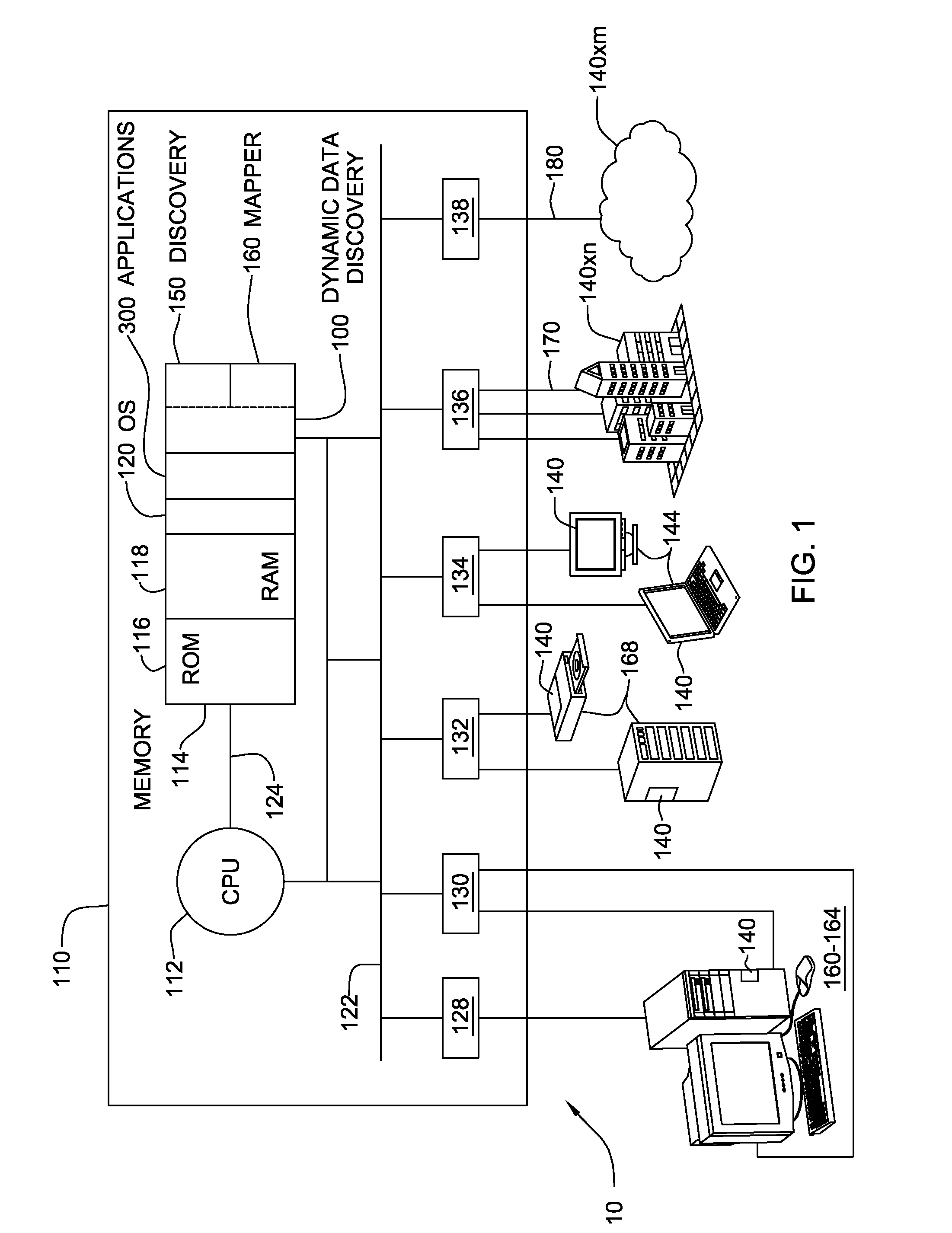Dynamic data discovery of a source data schema and mapping to a target data schema
a source data and schema technology, applied in the field of discovery and transfer of data, can solve the problems of inability of users to understand and transform data on the web, let alone their own data, and the volume of data available on the internet is increasing daily
- Summary
- Abstract
- Description
- Claims
- Application Information
AI Technical Summary
Benefits of technology
Problems solved by technology
Method used
Image
Examples
Embodiment Construction
[0020]The invention is described with reference to the accompanying drawings; however, the invention may be embodied in many different forms and should not be construed as limited to the embodiments set forth herein. Rather the illustrated embodiments are provided so that this disclosure is thorough and complete, and fully conveys the scope of the invention to those skilled in the art. Like numbers refer to like elements throughout.
[0021]As will be appreciated by one of skill in the art, the present invention may be embodied as a method, a data processing system, a computer program product and a service to dynamically discover data and the tables and fields of the data in a source data schema and then map the data to corresponding tables and fields in a target data schema. Accordingly, the present invention may take the form of an entirely hardware embodiment having a number of hardware components, an entirely software embodiment having a number of different software components, or ...
PUM
 Login to View More
Login to View More Abstract
Description
Claims
Application Information
 Login to View More
Login to View More - R&D
- Intellectual Property
- Life Sciences
- Materials
- Tech Scout
- Unparalleled Data Quality
- Higher Quality Content
- 60% Fewer Hallucinations
Browse by: Latest US Patents, China's latest patents, Technical Efficacy Thesaurus, Application Domain, Technology Topic, Popular Technical Reports.
© 2025 PatSnap. All rights reserved.Legal|Privacy policy|Modern Slavery Act Transparency Statement|Sitemap|About US| Contact US: help@patsnap.com



